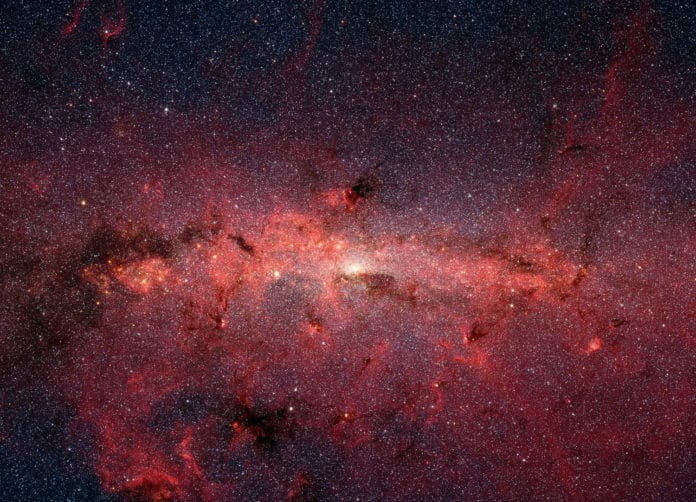According to the standard cosmological model, galaxies are built through hierarchical assembly on cosmological timescales. Like other disk galaxies, the milky way galaxy also underwent violent mergers and accretion of small satellite galaxies in its early history.
By the time of the collision, the Milky Way was already efficiently forming stars, most of which now reside within its thick disc, one of two disc-like structures that make up the Galaxy.
The stellar remnants of such events have been identified. It is essential to dating such events to uncover the formation and evolution of the Galaxy at high redshift. However, it has been challenging due to difficulties in obtaining precise ages for these oldest stars.
In a new study by the University of Birmingham, scientists have succeeded in dating some of the oldest stars in our galaxy with unprecedented precision. They did this by combining asteroseismology—the study of stellar oscillations—with kinematics and chemical abundances to estimate precise stellar ages.
After surveying around a hundred red giant stars, scientists determined that some of these were originally part of a satellite galaxy called Gaia-Enceladus, which merged with the Milky Way about 8–11 billion years ago. At least eight globular clusters were added to the Milky Way along with 50 billion solar masses of stars, gas, and dark matter.
The study outcomes also revealed that the group of stars surveyed all have similar ages or are slightly younger than the majority of the stars known to have started their lives within the Milky Way.
Josefina Montalbán, in the School of Physics and Astronomy at the University of Birmingham, is the lead author of the paper. She said: “The chemical composition, location, and motion of the stars we can observe today in the Milky Way contain precious information about their origin. As we increase our knowledge of how and when these stars were formed, we can start to understand better how the merger of Gaia-Enceladus with the Milky Way affected the evolution of our Galaxy.”
For this study, scientists used data from the Kepler satellite combined with data from the Gaia and APOGEE instruments. All three are set up to gather data to help scientists map and characterize stars in the Milky Way. The information was used on the individual oscillation modes of each star. Along with asteroseismology, scientists used spectroscopy to measure the chemical composition of the stars.
Co-author, Professor Andrea Miglio, at the University of Bologna, said: “We have shown the huge potential of asteroseismology in combination with spectroscopy to deliver precise, accurate relative ages for individual, very old, stars. Taken together, these measurements contribute to sharpen our view on the early years of our Galaxy and promise a bright future for Galactic archeoastronomy.”
The work is the result of the collaborative project, Asterochonometry, funded by the European Research Council and hosted by the Università di Bologna and the University of Birmingham. The Science and Technology Facilities Council also supported the research through a doctoral studentship.
Journal Reference:
- Montalbán, J., Mackereth, J.T., Miglio, A. et al. Chronologically dating the early assembly of the Milky Way. Nat Astron (2021). DOI: 10.1038/s41550-021-01347-7
